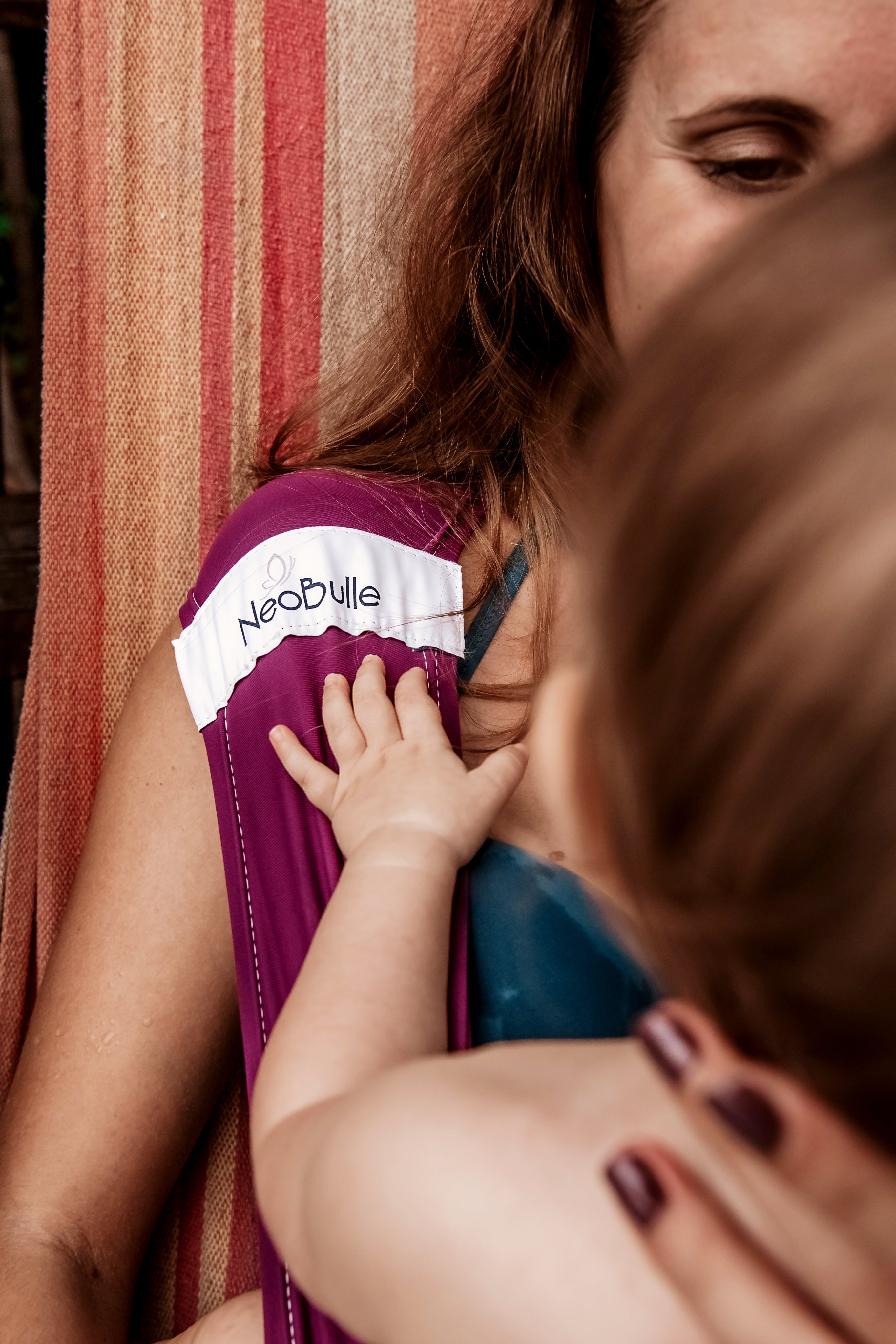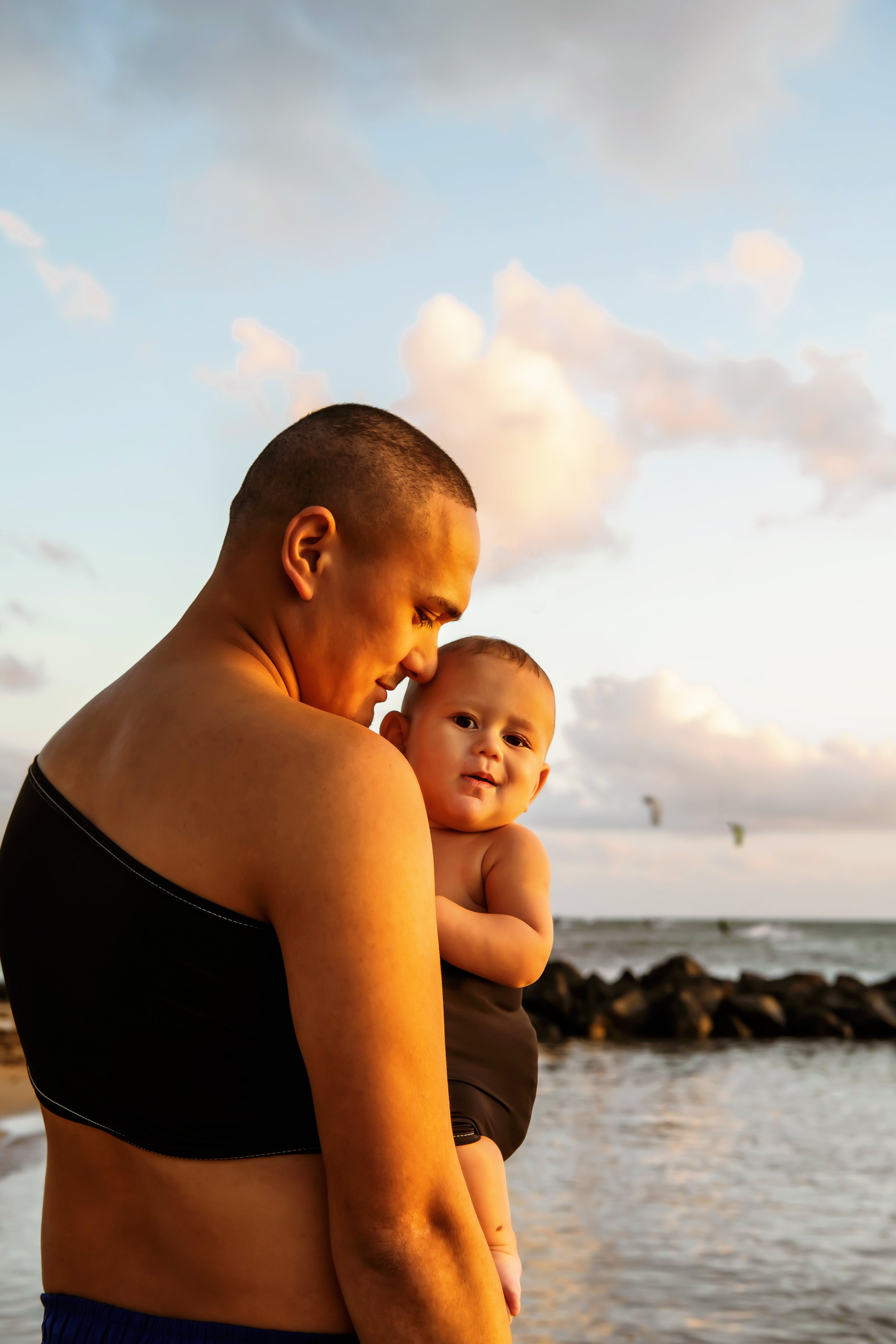The article of the day is dedicated to the mei-tai, also called Asian-inspired baby carrier or more simply "the thing like a scarf but easier". What is a mei-tai? What are the advantages and disadvantages of this type of system? We explain everything to you!
So, what exactly is a Mei-tai?
The Asian-inspired baby carrier is presented in the form of a rectangle of fabric (called the apron), with four straps inserted at the corners which form the waistband and shoulder straps.
Many traditional carrying systems are used in Asia, but the versions we find here have been highly westernized and often bear little resemblance to their original models (hence the increasing avoidance of the term "Asian baby carrier" in favor of Asian-inspired).
What are the main characteristics of the Mei-tai?
There are many different mei-tai models on the market. While the earliest versions were very basic (no adjustments), the most recent ones allow for adjusting the size of the apron, notably by reducing the width between the legs and the height, which allows significantly improving comfort and ensuring a better fit to the baby’s size (at least for the reference brands).
Among the possible variations, you can find:
- Straps that are extendable or padded at the shoulder of the wearer
- Belts that can be tied or clipped (mei-tais in this category are called "hybrids" because they are halfway between preformed models)
Most Asian-inspired baby carriers on the market are suitable for children from 3 or 4 months: this is because, even when maximally reduced, the apron often turns out to be a bit too wide and too high to comfortably and safely carry a newborn (risk of collapse in the system). They can be suitable for carrying up to about 3 years old, after which they are generally too narrow to allow for physiological use (support up to the hollow of the knee no longer possible).
It is highly recommended to choose a mei-tai with long enough and wide straps to be crossed outside the baby's legs and then attached at the back of the wearer: this provides better support, ensuring the baby is positioned high on the chest, and most importantly, that the load is supported by the straps and not the belt. When passing the straps between the wearer and the child, as suggested in some instructions, the load shifts onto the belt, which exerts quite strong compression on the wearer's abdomen (very discouraged for the integrity of the young mother’s perineum since it increases the risk of organ prolapse!), and the baby will inevitably slide lower on the chest.
which makes carrying less stable and less comfortable. Straps that are too narrow, even if long, cannot be crossed outside the baby's leg risk hindering proper blood circulation.The question of whether to pad the strap is much more subjective and totally depends on the wearer's preferences. Nevertheless, in ventral carrying, one often prefers panels that unfold over the shoulder and back, whereas in dorsal carrying, padding is often more comfortable because the strap can unfold less and "pinch" the trapezius a bit.
The advantages of the Mei-tai
The mei-tai is the perfect compromise between a carrying scarf and a preformed baby carrier. It is a system that has managed to combine some of the advantages of both systems to give a simple, lightweight, and comfortable result to wear.
This baby carrier presents very few difficulties in installation: no fold upon fold nor adjustments on the baby (other than those of the panel but which are done beforehand), very little risk of mishandling or error.
It is more enveloping than the preformed baby carrier and allows for better close contact, making it consequently more comfortable. It remains less enclosing than a scarf and is perfect for parents who do not like to feel too tight.
Regarding the baby, it is an interesting solution to address some installation difficulties, notably:
- Babies suffering from gastroesophageal reflux, who often struggle with overly enveloping carriers and can be very stiff when they are in pain. Since it passes between the child's legs, the mei-tai allows for a safe installation with a stiff as a board baby and who screams, not very academic but at this stage, we don’t care much — the main thing is to survive!
- Babies a bit more "older" who haven't been used to the scarf: after 3 or 4 months, it can sometimes be more delicate to install a toddler in a scarf, as they are not used to the sensations and are often not patient enough to let their parent learn the technique. The mei-tai, being more immediate and less enclosing, is generally better tolerated.
- Babies who present hyperextension and/or torticollis issues, who tend to adopt very stiff and sometimes twisted postures naturally: here again, the mei-tai is often more accessible for parents and better accepted by the child.
Note that both its breathable cotton twill composition and the fact that it is open on the sides make it one of the most comfortable carrying systems to use in hot weather.
The weaknesses of the Mei-tai
The main weakness of the mei-tai is that it can be less adjustable than other carriers, especially for very small or very large babies, and may require additional accessories or adjustments for optimal fit.
It remains its less versatile and evolutive nature compared to a baby carrier wrap. This is mainly due to its panel, which, even adjustable, cannot optimize coverage for a child's large age gap: it will be ideal for a newborn but a bit short from 2 years old, or it can be used up to 3 or 4 years old but only from 3 or 4 months old.Another small downside is that its easier installation is less precise adjustments than those of the wrap. If the use of the wrap is very well mastered, one might feel a slightly less comfortable in comparison. The corollary is that it is better to have a well-mastered mei-tai than a poorly adjusted wrap.
Finally, like the wrap, you find straps dragging on the ground during setup, which makes outdoor installation in the rain more complicated than with a preformed carrier!
Nothing too disabling!
The Asian-inspired baby carrier, less known than its counterparts the wrap or the preformed, thus quite rightly deserves its place within the family of ergonomic carriers and would benefit from greater recognition!
It’s an excellent choice for parents who are intimidated by using a wrap but still want more closeness than with a preformed carrier.





